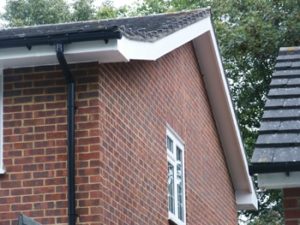
Eaves Maintenance
Add a review FollowOverview
-
Sectors YouTube Views & Like
Company Description
Nine Things That Your Parent Teach You About Fascia And Soffit Repair
Fascia and Soffit Repair: Essential Tips for Homeowners
Fascia and soffit are essential components of a home’s outside, typically ignored by numerous homeowners. These aspects play a substantial function in protecting the interior of a home from the elements, while likewise adding to the overall visual appeal of the building. Understanding their functions, common issues, and repair techniques is essential for preserving a healthy home. This short article will provide a comprehensive summary of fascia and soffit repair, together with frequently asked concerns, an informative table, and lists for property owners.
What Are Fascia and Soffit?
Fascia
Fascia boards are horizontal slabs that run along the roofline, acting as an essential structural component. They supply a finished aim to the roofing system and work as a support group for the bottom row of shingles. Furthermore, they play numerous important roles:

- Protection: Fascia guards the roof and underlying structure from water damage and bugs.
- Visual appeal: It enhances the visual appeal of the home by supplying a clean and finished edge.
- Support for gutters: Fascia boards are frequently essential in supporting gutter systems.
Soffit
Soffits are the panels that sit underneath the fascia, producing an enclosed area in between the eaves and the side of the house. They provide both practical and visual functions:
- Ventilation: Soffits help to ventilate the attic, enhancing air circulation and lowering moisture buildup.
- Defense: Like fascia, soffits work as a barrier against pests and weather aspects.
- Aesthetic connection: Soffits can be completed in various products and designs, adding to the overall appearance of the home.
Common Issues with Fascia and Soffit
With time, fascia and soffit can experience various issues due to weather, insects, and lack of maintenance. Some typical concerns include:
- Rotting wood: Exposure to wetness can lead to wood rot, weakening the structural stability.
- Bug invasions: Insects, birds, and other insects may penetrate damaged fascia and soffit.
- Peeling paint or discoloration: Weathering can trigger fading, chipping, or peeling of paint, interfering with aesthetic appeal.
- Water damage: Leaking gutters or a damaged roofing system can cause water pooling, triggering damage to fascia and soffit.
- Mold and mildew: Poor ventilation can lead to mold growth within the soffit area.
Repairing Fascia and Soffit: A Step-by-Step Guide
Materials Required
To effectively repair fascia and soffit, homeowners require the following products and tools:
| Material/Tool | Function |
|---|---|
| Replacement boards (wood/vinyl) | To replace damaged sections |
| Paint or sealant | To secure against weather |
| Caulk | To seal joints and gaps |
| Ladder | For accessing raised locations |
| Power saw | For cutting replacement boards |
| Drill and screws | For securing the brand-new boards |
| Security gear | To protect versus accidents |
Step-by-Step Repair
-
Assess the Damage: Inspect the fascia and soffit for indications of damage, such as rot, sagging, or discoloration.
-
Eliminate the Damaged Sections: Utilize a power saw to thoroughly cut out rotten or damaged boards. Be conscious of the surrounding products to prevent additional damage.
-
Prepare the Area: Clean the exposed location to eliminate particles and guarantee there is a strong surface to attach the brand-new boards.
-
Set Up Replacement Boards: Cut brand-new fascia and soffit boards to size. Attach them securely using screws or nails, ensuring they align appropriately with the existing structure.
-
Seal and Paint: Apply caulk to any joints or gaps to avoid wetness infiltration. As soon as the caulk sets, paint or seal the brand-new boards to protect against future weathering.
-
Check and Maintain: Regularly check the fascia and soffit for signs of wear and tear. Execute preventive maintenance to prolong their lifespan.
When to Call a Professional
Specific scenarios might necessitate hiring a professional for fascia and soffit repair:
- Extensive damage that includes structural aspects.
- Problem accessing high or high areas.
- Absence of experience or convenience with home repairs.
- Installation of specialized products, such as customized aluminum or vinyl alternatives.
FAQs About Fascia and Soffit Repair
Q1: How can I inform if my fascia or soffit requirements to be fixed?
A: Look for indications of water damage, such as discoloration, peeling paint, or decaying wood. Additionally, analyze for insect activity or drooping areas.
Q2: What materials are best for replacing fascia and soffit?
A: Common materials include wood, vinyl, and aluminum, each providing various benefits in regards to toughness, maintenance, and visual appeal.
Q3: Can I repair fascia and soffit myself?
A: Many homeowners can carry out basic repairs, however it’s vital to examine your ability level and convenience. For extensive damage or high areas, consider working with a professional.
Q4: How frequently should I examine my fascia and soffit?
A: It’s suggested to examine fascia and soffit at least twice a year, especially after heavy rainfall or storms.

Q5: Do I need licenses for fascia and soffit repairs?
A: Most small repairs do not need licenses; nevertheless, it’s best to contact local building regulations and guidelines.
Fascia and soffit repair is a required maintenance job for homeowners that not only maintains the structural stability of the home however likewise improves its visual appeal. Understanding the common issues and knowing how to address them is vital for effective home repair. Regular evaluations and maintenance can save substantial costs in the long run while guaranteeing a safe and appealing living environment. Property owners ought to feel empowered to act and address these crucial components of their homes.


